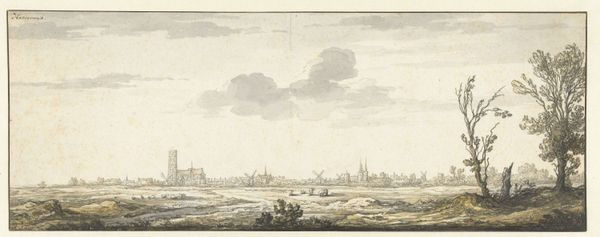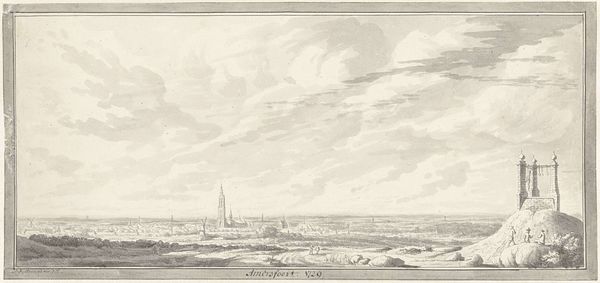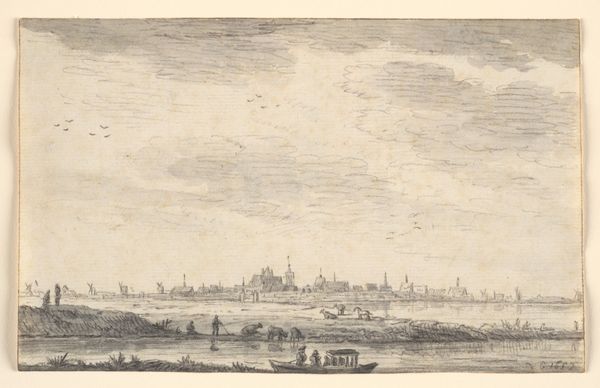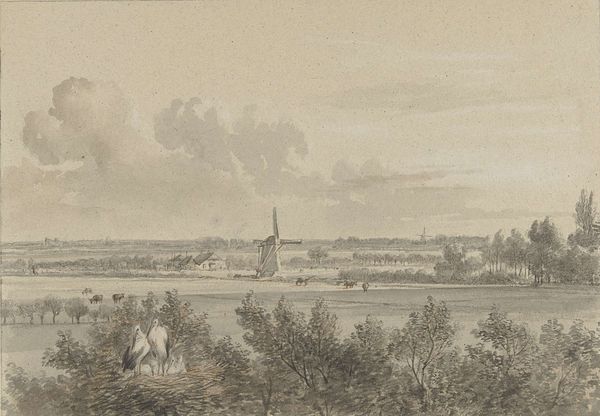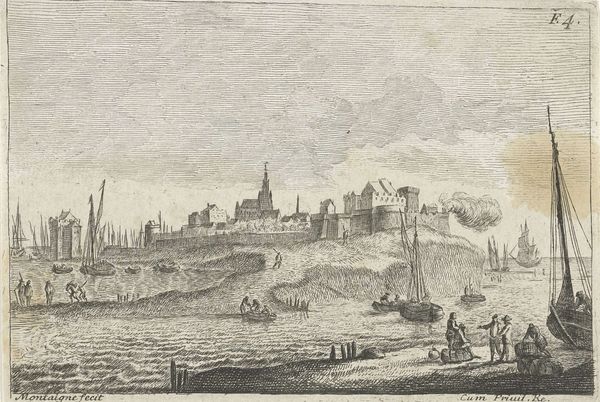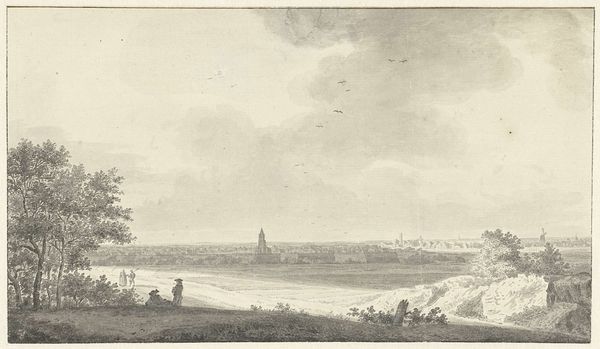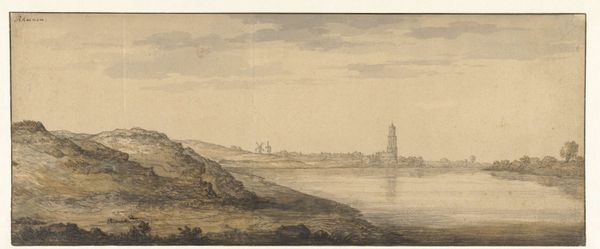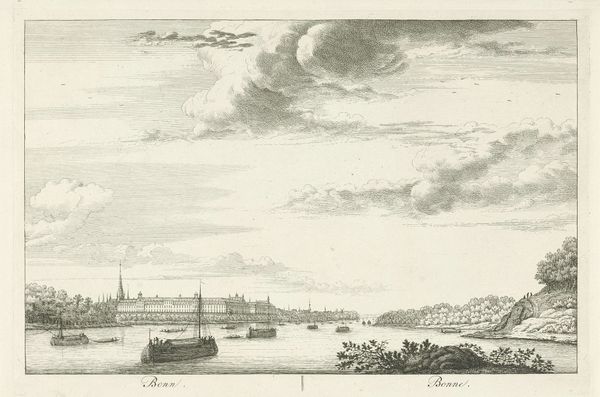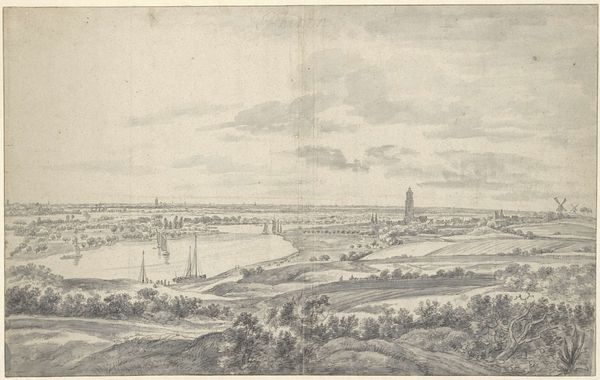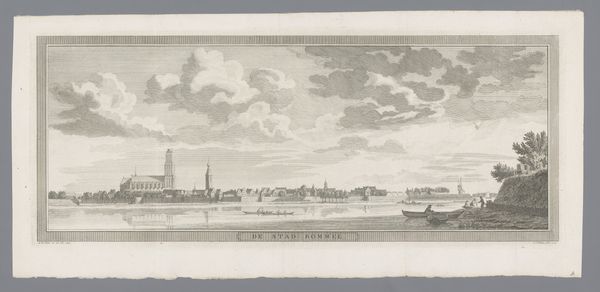
drawing, pencil
#
pencil drawn
#
drawing
#
baroque
#
landscape
#
pencil
#
cityscape
#
realism
Dimensions: height 179 mm, width 329 mm
Copyright: Rijks Museum: Open Domain
Curator: We’re looking at "View of the City of Höxter," a cityscape created with pencil on paper by Pieter Jan van Liender in 1753. The work depicts a serene panorama, typical of the Baroque and Realism styles popular during that era. Editor: My first impression is one of quiet observation. It's almost meditative, with its subdued tones and attention to the gentle flow of the river and the buildings that make up the landscape. The clouds contribute to an overarching melancholy feeling. Curator: Exactly. Note how van Liender meticulously delineates each architectural form. The church spires pierce the skyline, asserting civic pride through the precise geometries, and they seem to repeat their forms in the foreground masts and branches. This compositional organization brings clarity and visual harmony. Editor: Yet, there’s something inherently unsettling about this picture. Despite the clarity of representation, the lack of overt social engagement makes the image feel divorced from the lives of its inhabitants. It’s an idealized vision. It strikes me that during this era, those living in cities like Höxter faced various socio-economic and political struggles that aren't really reflected here. Where is the texture of lived experience? Curator: You’re not wrong, but let's focus on the formal components of the work: consider the tonality, ranging from the palest greys to the bold pencil markings in the front. It offers structure, which anchors the composition. The technique focuses more on pure observation, offering a clean depiction. Editor: Perhaps that 'clean' depiction masks some realities. The Baroque often idealized and sanitized its subjects, which becomes particularly apparent in urban views. The river could, in actuality, have represented division and served to limit the flow of vital goods between marginalized communities. I am left wanting to understand these individuals more thoroughly, to contextualize this scene beyond its apparent harmony. Curator: I do find it interesting how such varied emotional responses can emerge when evaluating an image. Whether you appreciate it for its pure form or lament its social constraints, "View of the City of Höxter" provokes strong points of view. Editor: True. And even in its omissions, the artwork reveals an aspect of its era, asking us to consider what histories aren't represented within these artistic compositions.
Comments
No comments
Be the first to comment and join the conversation on the ultimate creative platform.
